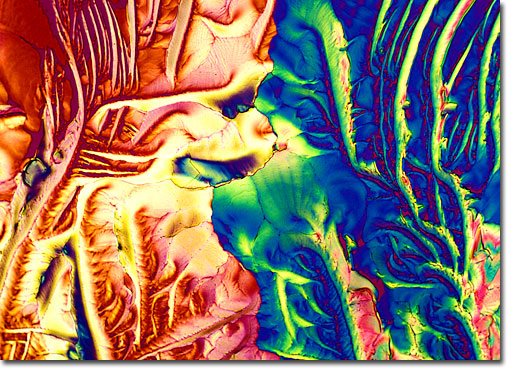Pearl
|
Pearls are an organic gem created by oysters, clams, and mussels, mollusks that are found in both freshwater and marine habitats. Pearls harvested from saltwater are sometimes referred to as Oriental pearls, while those from freshwater are called freshwater or river pearls. A pearl is an abnormal growth that results when a foreign object, such as a grain of sand, invades the soft inner tissues of a mollusk's body. The particle acts as an irritant inside the mollusk and is coated with layers of material called nacre, or mother-of-pearl, which is secreted by the animal's shell-secreting cells. Nacre is composed of aragonite, a form of calcium carbonate, and also contains a small amount of conchiolin, a horn-like organic substance (albuminoid) that is the main component of the mollusk's outer shell. These gems are characterized by their translucence, luster, and the delicate play of surface color called orient, which is the soft iridescence caused by the refraction of light by the layers of nacre. The more perfect the shape (spherical or drop like) and the deeper its luster, the greater the value of a pearl. Pearls are found in many colors but the most prized are white, black, cream, and rose -- the Indian rose pearls being the most esteemed. Color varies according to the species of mollusk and its environment. Naturally-occurring pearls are rare and expensive, since thousands of oysters have to be searched to find only a single pearl. Since 1920, the vast majority of pearls sold in the gem trade are cultured pearls. Culturing is a technique developed in Japan in which a tiny bead of nacre is implanted inside a young oyster, which is then returned to the water and harvested years later. Cultured pearls are very similar to naturally occurring pearls and can only be distinguished by an expert. Artificial, or imitation, pearls are glass beads that have been dipped into a solution made from fish scales, forming an iridescent coating that wears off easily. Unlike mineral gemstones, pearls don't require cutting to create a special aspect of beauty. That and their rare occurrence in nature have made pearls a valuable adornment for thousands of years, signifying high status or wealth. Roman women wore pearls to bed so they could be reminded of their wealth immediately upon awakening. In England, a law established in 1612 prohibited the wearing of pearls by nobility, professors, and doctors or their wives, as the gems were considered an exclusive privilege for royalty. Native Americans used freshwater pearls obtained from the Mississippi River that were strung into necklaces, sewn onto headdresses, and set into copper ornaments. Many gem scholars agree that the tradition of birthstones arose from the Breastplate of Aaron described in the Bible (Exodus 28, 15-30). The breastplate was a ceremonial religious garment set with twelve gemstones that represented the twelve tribes of Israel and corresponded with the twelve signs of the zodiac and the twelve months of the year. There are many different birthstone lists, however, and some argue that they should be assigned by astrological sign and not month. Pearl is the birthstone for June and the zodiac sign Gemini. |
© 1995-2025 by Michael W. Davidson and The Florida State University. All Rights Reserved. No images, graphics, software, scripts, or applets may be reproduced or used in any manner without permission from the copyright holders. Use of this website means you agree to all of the Legal Terms and Conditions set forth by the owners.
This website is maintained by our
|
